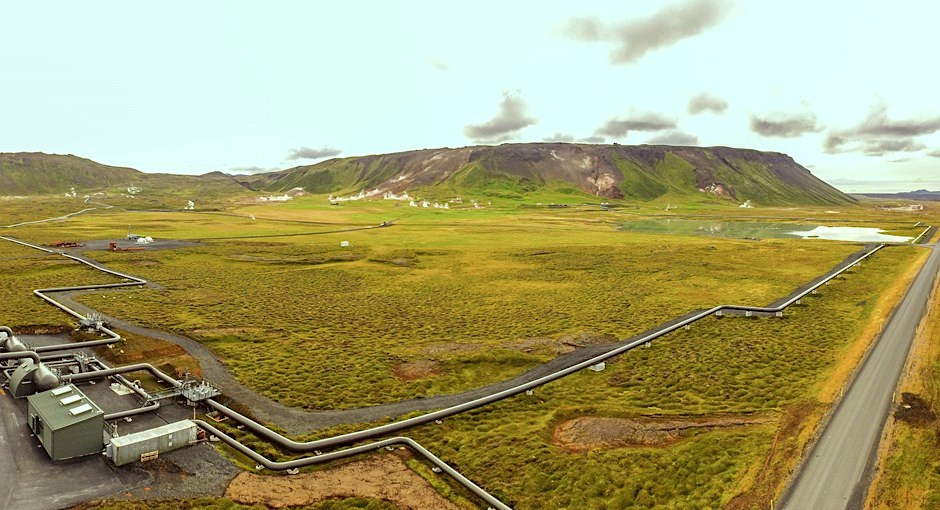Steam field supply system of the Theistareykir geothermal plant, Iceland

In a paper to be presented at the WGC 2020, Icelandic engineering group Mannvit will share details on its steam field work for the Theistareykir geothermal power plant in Iceland. Here a few details shared by the company.
The steam supply for Theistareykir Geothermal Power Plant is a single flash cycle providing steam for 2×45 MWe turbine units whereas the separated water is mixed with steam condensate from the units and reinjected. The steam supply has been in operation from end of 2016. The paper “Theistareykir Geothermal Power Plant, description of the steam supply system: Design, operation and experience gained” describes the design and layout of the steam supply, the characteristics of the steam wells, operation and control strategy of the steam supply and its ability to cope with variable load. The paper is presented in Session 8E, Tuesday April 28th at the WGC 2020 in Reykjavik by Freyr Hardarson, J. Gardar Einarsson and Arni V. Sigurdsson from Mannvit and Sigurgeir B. Geirsson, Karl E. Sveinsson and Valur Knutsson from plant owner and operator Landsvirkjun. More information on the geothermal project as a whole.
The paper describes the design and layout of the steam supply, the characteristics of the steam wells, operation and control strategy of the steam supply and its ability to cope with variable load. Furthermore, the paper will report on the experience gained from mixing steam condensate with the separated water, the effect of condensate mixing on the permeability of the re-injection wells and operational history for the first years of operation.
The steam supply system comprised of the steam wells, steam pipelines, steam gathering pipelines, steam separators, main steam pipelines, steam control valves, mist eliminators, re-injection pipeline, condensate mixing system and re-injection wells. The steam wells are located on five drilling areas from where most of the wells are directionally drilled. The average length of the wells is 2 500 m and their vertical depth ranges from 1 800 – 2 400 meters, each well producing steam in the range equivalent to 5-21 MWe of electrical power. In the operation of the wells, some of the wells have been shown to have fluctuation in the output and some decline has been noted.
The operation of the steam supply must facilitate the operation of the units at variable load and handle abrupt changes in the power output of the turbine/generator units without any delay in the operation of the units due to instability or transient behaviour of the steam supply system. The paper describes some the events that can occur and how the steam supply system is able to robustly negate these events.
The separated water from the steam separators is re-injected into wells at a depth of approximately 400 meters at the boundary of the geothermal field. To increase the permeability of the wells and reduce scaling, the geothermal water from the steam separators is mixed with condensate from the condensers of the turbines to cool and dilute the water. The experience of condensate mixing has shown large increase in the permeability of the re-injection wells without any adverse effects after about 2 years of operation.
Theistareykir GPP IPMA Award Winner
Landsvirkjun’s Theistareykir geothermal power plant was awarded the prestigious International Project Excellence Award (IPMA) in the category large- and mega-sized projects at the IPMA 31st World Congress in Mexico on October 1st.
Source: Mannvit